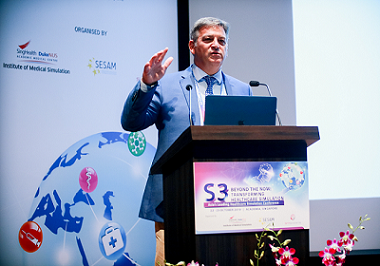Cost-Effective Repairs for Simulation Trainers in Resource-Limited Settings
Introduction:
Simulation trainers for lumbar puncture (LP), airway management, and central venous catheter (CVC) insertion are critical for medical training but face challenges in low- and middle-income countries (LMICs) due to high replacement costs for degraded components. This project developed cost-effective, in-house solutions for LP consumables, trachea replacements, and CVC trainers to maintain high-quality training while reducing costs.
Description:
Three in-house solutions were developed. For LP, a reusable consumable was created using three-dimensional (3D) printing with Blender and Fusion 360, incorporating resin and flexible tubing to simulate bone resistance and cerebrospinal fluid (CSF) flow. For airway management in Advanced Cardiovascular Life Support (ACLS) training, a trachea replacement used flexible high-pressure gas tubing, football bladders for lung expansion, and gas pipeline connectors for realistic airway integration. For CVC insertion, a 3D-printed trainer used Fusion 360 to model tubes for venous puncture resistance, resin for soft tissue repair, and custom Y-shape and C-shape connectors. Prototyping, testing, and faculty validation refined each design for realism and durability.
Discussion:
The LP consumable reduced costs by over 75%, maintaining realistic needle resistance and CSF flow. The trachea replacement restored airway functionality with 75% cost savings, though material longevity needs improvement. The CVC trainer achieved over 80% cost reduction but fell short in soft-tissue elasticity and ultrasound guidance, limiting advanced training. These solutions demonstrate scalable, cost-effective repairs for LMIC simulation centers, with future iterations targeting enhanced durability and realism.
© 2025 SingHealth Group. All Rights Reserved.














